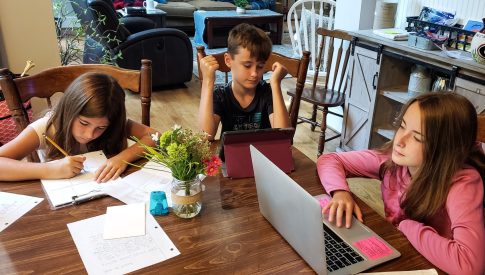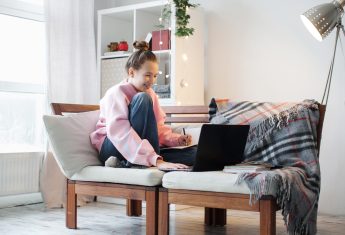Biology - National 5 Index
Online Lessons for Students in Scotland learning National 5 Biology
Cell, Biology: a branch of biology that studies the structure, function and behaviour of cells.
Cell structure: cells are the building blocks of all living organisms. Organisms made of a single cell, such as bacteria and the fungus yeast, are described as being unicellular. Organisms made of many cells such as animals, most plants and many species of fungi, are described as being multicellular. Multicellular organisms can be made up of millions of cells.
Cell ultrastructure and cell wall: ultrastructure of cell wall: consists of 1000 to 15,000 glucose monomers. Cellulose chains are arranged in parallel manner and make up the smallest fibres called micelles.
Transport across cell membranes: this section involves topics – structure of cell membrane and passive transport, passive transport and active transport.
Structure of cell membrane and passive transport (diffusion): in passive transport, substances move from an area of higher concentration to an area of lower concentration in a process called diffusion.
Passive transport (Osmosis): the diffusion of water through a semipermeable membrane according to the concentration gradient of water across the membrane.
Active transport: in cellular biology, active transport is the movement of molecules across a cell membrane from a region of lower concentration to a region of higher concentration.
DNA and the production of proteins: DNA carries the genetic information for making proteins. The four bases A, T, C and G make up the genetic code.
Structure of DNA: the DNA molecule consists of two strands that wind around one another to form a shape known as a double helix. Each strand has a backbone made of alternating sugar (deoxyribose) and phosphate groups. Attached to each sugar is one of four bases–adenine (A), cytosine (C), guanine (G), and thymine (T).
Messenger RNA: Messenger RNA (mRNA) is a single-stranded RNA molecule that is complementary to one of the DNA strands of a gene.
Proteins: large biomolecules and macromolecules that comprise one or more long chains of amino acid residues.
Protein structure and function: proteins are the most versatile macromolecules in living systems and serve crucial functions in essentially all biological processes.
Enzymes: proteins that help speed up metabolism, or the chemical reactions in our bodies. They build some substances and break others down. All living things have enzymes. Our bodies naturally produce enzymes.
Genetic engineering: also called genetic modification or genetic manipulation, genetic engineering is the direct manipulation of an organism’s genes using biotechnology.
Respiration: a chemical reaction that happens in all living cells, including plant cells and animal cells. It is the way that energy is released from glucose so that all the other chemical processes needed for life can happen.
Role of ATP, Aerobic Respiration and Fermentation: learn to understand the process of respiration, process of ATP generation and explain its uses in cell activity, state the process of glucose breakdown and the products created under varying conditions.
Multicellular organs: an organism that consists of more than one cell, in contrast to a unicellular organism. Multicellular organisms arise in various ways, for example by cell division or by aggregation of many single cells.
Producing new cells: new cells are created from a process called cell division. The new cells are produced when a cell, called the mother cell, divides into new cells called daughter cells. When two daughter cells have the same number of chromosomes as the original cell, the process is called mitosis.
Mitosis: new cells are created from a process called cell division. The new cells are produced when a cell, called the mother cell, divides into new cells called daughter cells. When two daughter cells have the same number of chromosomes as the original cell, the process is called mitosis.
Stem cells and cell specialisation: stem cell differentiation involves the changing of a cell to a more specialised cell type, involving a switch from proliferation to specialisation.
Control and communication – nervous control: Learn to describe what CNS is, understand the function of parts of the brain, understand the different types of neuron and explain their function, describe the structure and function of the reflex.
Structure and function of CNS and structure and function of reflex arc:
Reflex actions: There are three main types of neuron: sensory, motor and relay. These different types of neurons work together in a reflex action. A reflex action is an automatic (involuntary) and rapid response to a stimulus, which minimises any damage to the body from potentially harmful conditions, such as touching something hot. Reflex actions are therefore essential to the survival of many organisms. A reflex action follows this general sequence and does not involve the conscious part of the brain. This is why the response is so fast.
Control and communication -hormonal control: Hormones are chemical messengers. Hormones are released into the bloodstream by groups of cells called endocrine glands .
Endocrine system and role of hormones: pupils learn to describe the purpose of the endocrine glands, understand the function of hormones, and to understand and explain complementary receptors.
Blood glucose regulation: the concentration of glucose in the blood is regulated by the action of the hormones insulin and glucagon . These hormones are made in the pancreas and act on cells in the liver.
Reproduction: the biological process by which new individual organisms – “offspring” – are produced from their “parent” or parents.
Diploid/Haploid cells. Types of gametes. Process of fertilisation. This process is known as fertilisation. Gametes contain half the number of chromosomes of all other cells in the organism. This means they are haploid . When the male and female gametes combine in fertilisation they create an embryo with the full complement of chromosomes (diploid).
Variation and inheritance: a characteristic that is a result of genetic. information from the parents is called inherited variation.
Comparison of discrete variation (single gene) and continuous variation (polygenic inheritance) and genetic terminology: lesson includes explaining the term variation, understanding the types of variation that exist and understanding a range to variation and genetic inheritance.
Monohybrid crosses and the mechanism of inheritance: lessons include the monohybrid cross, apply skills to predict ratios of phenotypes, understand why predicted ratios are not always achieved.
Transport systems – plants: plants have two transport systems – xylem and phloem. Xylem transports water and minerals. Phloem transports sugars and amino acids dissolved in water.
Plant organs and leaf structure: plants are made up of organs, including roots, leaves, the stem and reproductive organs. Each organ has its own functions. Together, the organs of a plant allow it to carry out the seven processes of life.
Water transport and role of Xylem: plants have tissues to transport water, nutrients and minerals. Xylem transports water and mineral salts from the roots up to other parts of the plant.
Sugar transport and role of phloem: plants have tissues to transport water, nutrients and minerals. Phloem transports sucrose and amino acids between the leaves and other parts of the plant.
Transport systems – animals: in mammals, blood consists of plasma, red blood cells and white blood cells. Nutrients (eg glucose and amino acids), oxygen and carbon dioxide are transported around the body in the blood.
Blood cells and pathway of blood through heart, lungs and body: pupils learn stating parts of blood, explaining different blood cells and their functions, and to understand the parts and functions of the circulatory system.
Absorption of materials into and out of the blood stream and structure of associated tissues: The surfaces involved in the absorption of materials have certain features in common: a large surface area; thin walls; extensive blood supply.
Life on Earth: this section includes lessons on ecosystems, distribution of organisms, photosynthesis, energy, food production, evolution and more.
Ecosystems: an ecosystem is a geographic area where plants, animals, and other organisms, as well as weather and landscape, work together to form a bubble of life.
What is an Ecosystem? What is a Niche? In ecology, the term “niche” describes the role an organism plays in a community. A species’ niche encompasses both the physical and environmental conditions it requires (like temperature or terrain) and the interactions it has with other species
Competition in Ecosystems: competition will occur between organisms in an ecosystem when their niches overlap, they both try to use the same resource and the resource is in short supply
Distribution of organisms: the term biogeography describes the distribution of different types of organisms on the earth.
Biotic and abiotic factors: biotic factors are living things within an ecosystem; such as plants, animals, and bacteria, while abiotic are non-living components; such as water, soil and atmosphere.
Sampling techniques and paired – statement keys: lessons include understanding why sampling is used and be aware of different techniques, to describe sources of error associated with sampling techniques, to understand and apply paired statement keys to organisms.
Factors affecting biodiversity and indicator species: important direct drivers affecting biodiversity are habitat change, climate change, invasive species, overexploitation, and pollution.
Photosynthesis: a process used by plants and other organisms to convert light energy into chemical energy that, through cellular respiration, can later be released to fuel the organism’s activities.
Biochemistry of Photosynthesis (light reaction & carbon fixation): a process used by plants and other organisms to convert light energy into chemical energy that, through cellular respiration, can later be released to fuel the organism’s activities.
Limiting factors of Photosynthesis: three factors can limit the rate of photosynthesis: light intensity, carbon dioxide concentration and temperature. Light intensity. Without enough light, a plant cannot photosynthesise very quickly – even if there is plenty of water and carbon dioxide. Carbon dioxide concentration. Temperature.
Energy in ecosystems: energy transfer in ecosystems can be shown by an example of a food chain (producer, primary consumer, secondary consumer, tertiary consumer).
Food chains and pyramids of energy: learn the link between food chains and energy transfer, understand how energy can be lost in the process, and to describe a pyramid of numbers and a pyramid of energy.
Food production: preparing food, in which raw materials are converted into ready-made food products for human use either in the home or in the food processing industries.
Use of fertilisers and pesticides: farmers and foresters often depend on agrochemicals (pesticides and fertilizers) to combat pests and diseases, boost productivity, and improve crop quality, while livestock producers and aquaculturists frequently depend on antibiotics to fight bacterial infections and promote animal growth.
Evolution of species: in biology, evolution is the change in the characteristics of a species over several generations and relies on the process of natural selection.
Mutations and production of new alleles: genetic variation can be caused by mutation (which can create entirely new alleles in a population), random mating, random fertilization, and recombination between homologous chromosomes during meiosis (which reshuffles alleles within an organism’s offspring).
Natural selection: the process through which populations of living organisms adapt and change. Individuals in a population are naturally variable, meaning that they are all different in some ways. This variation means that some individuals have traits better suited to the environment than others.
Speciation:the evolutionary process by which populations evolve to become distinct species.


"It's bright and colourful, easy to read, and extremely easy to use unlike most textbooks or online learning websites" Daisy, S3 PupilSign Up & Learn Today

